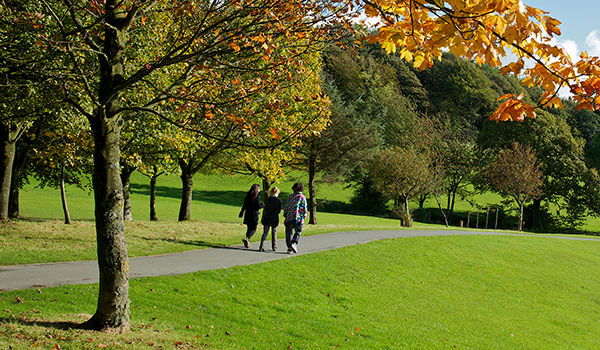With a degree in biochemistry, you’ll study small things that make a big impact.
By understanding life at the molecular level you can play a role in addressing major global challenges, like developing treatments for disease, improving forensics in police investigations, or tackling hunger through improving crop yields.
Unlock the secrets of life
Biochemistry unites biology and chemistry to understand the cellular, molecular and chemical interactions within living systems.
This knowledge of living organisms will provide you with a deep understanding of how life works. Indeed, biochemists have been at the forefront of making breakthrough discoveries across medicine, agriculture and biotechnology that have changed our world.
This four-year BSc with a placement year is taught by experts from our Biomedical and Life Sciences and Chemistry departments. Your placement year will allow you to gain workplace experience, helping you to stand out with potential employers.
You will delve into biochemistry in the context of health and disease and study topics in biochemistry, cell biology and molecular genetics, which are at the heart of modern medical and health research. You will also study fundamental themes in chemistry.
You will be taught by our academics whose vast biochemistry research experience includes the molecular and biochemical mechanisms of various cancers; the biochemistry of organisms that thrive in extreme environments; and biomedical imaging agents to probe drug activity in cells.
Together with your year placement year, your degree is an ideal basis for a host of careers across the biomedical, research, biotechnology and pharmaceuticals sectors, offering you the scientific knowledge, practical lab skills and career-ready mindset to succeed. Plus, you will pay just 20 per cent of the standard tuition fee during your placement year.
And, because you will build your skills and competence in experimental design, data recording, analysis and presentation, effective project management, teamwork and communication, you will have highly transferable skills valued by employers both within the sciences and in broader fields such as marketing, finance and management.
Your journey through biochemistry
Our academics have carefully designed this course to provide you with a structured, progressive training in biochemistry.
- In Year 1, you will study a range of core topics designed to provide you with a broad overview of biology and chemistry, including molecules of life, cell biology and organic chemistry that will build on your pre-university knowledge.
- In Year 2, you may choose to continue to study chemistry options or complement your biochemistry studies by focussing on bioscience-related topics, such as pharmacology or drug design and development.
- You will spend Year 3 on a work placement in industry, building your professional toolkit and gaining valuable insights into a career in biochemistry. You will return to Lancaster to complete your fourth year with renewed confidence and drive to achieve your goals.
- In Year 4, you will have greater choice in the modules you study and may explore themes such as molecular medicine or cell signalling.
You will also put your learning into practice with your own, independent research project. This is your opportunity to make a unique contribution to increasing scientific knowledge in an area of biochemistry that fascinates you.
A hands-on degree
Our state-of-the-art life science teaching laboratories will be at the heart of your degree. They are where you will put the knowledge you have acquired from lectures and tutorials into practice and get to know your course-mates and academics.
You will gain hands-on experience (depending upon your specialisation) of using equipment and facilities such as:
- our bioimaging facility
- protein purification and characterisation facilities
- cell sorters
- confocal microscopes
- flow cytometers
- PCR thermocyclers
- cell culture facilities
In addition to laboratory practical classes and workshops, you will learn through lectures, workshops, tutorials, laboratory reports, essays and case studies, presentations, tests and exams. You will also benefit from digital resources through our online learning environment which will support your independent learning.
Altogether your classroom learning and practical experience means you will graduate well-prepared for a successful career in biochemistry or in other scientific and non-scientific fields.









